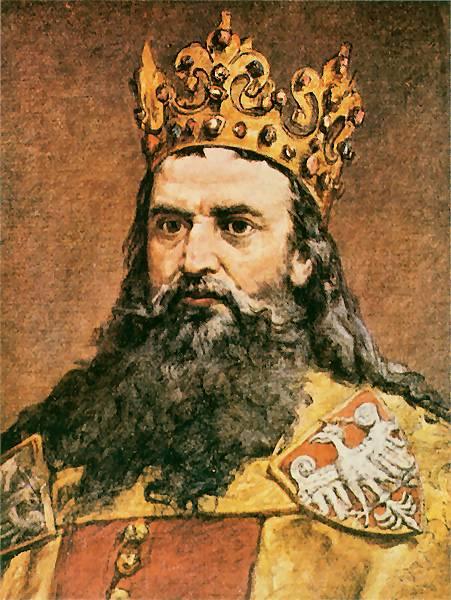Description
In the painting "Casimiro el Grande" by Jan Matejko, the greatness and complexity of the historical character of the Polish King Casimiro III is encapsulated, a central figure in the history of Poland in the fourteenth century. Under the technical mastery of Matejko, one of the most prominent figures of Polish art of the nineteenth century, this work stands out not only for its historical value, but also by the deep symbolic and expressive burden that each element of the composition transmits.
The work is characterized by its intense color palette, where the dark and rich tones that contrast with flashes of light predominate, creating an atmosphere of solemnity and power. Casimiro, represented in the center of the composition, wears a majestic mantle that flows in complex folds, symbolizing its status and wealth of its reign. His face, with an expression of determination and reflection, captures the duality of a monarch that, although powerful, also faces the difficulties inherent in his role. The use of chiaroscuro, a technique that Matejko dominated, helps accentuate the king's three -dimensionality and direct the viewer's gaze towards his figure.
Around Casimiro, various elements indicate both their historical context and its legacy. The inclusion of a series of symbols, such as the coat of arms of Poland and the representation of the city of Krakow in the background, underlines the importance of its reign in the development of the Polish State. Every detail is intentional, from the subtle gestures of the figures that accompany the king to the objects that adorn the scene, which contribute to creating a sense of visual narration. The secondary characters, although less prominent than Casimiro, add a nuance of interest, as if they represented different aspects of the Polish society under their mandate.
Matejko, known for his ability to address historical issues in a dramatic and emotional way, uses this work not only to narrate the story of a king, but also to invoke a cultural heritage that resonates with the Polish nationalism of the nineteenth century, a period in which The work is executed. His style, which combines elements of romanticism and realism, manifests itself in the richness of details and in the expressiveness of faces, giving each figure of their own life and a meaning beyond mere historical representation.
The story of "Casimiro el Grande" is not only limited to an icon of Polish art; It is also an affirmation of the indomitable spirit of a nation in search of its identity in the face of the challenges that time and history have imposed. The work, like other Matejko creations, such as "the dispute over the banquet of the hermitage" and "Grunwald's event", reinforces its role not only as an artist, but as a chronicler of Polish history, each brushstroke A testimony of the past that is still alive in collective memory.
This oil, based on its theme and technique, is offered as a starting point to explore the transition from Polish art in the context of its national history. With deep attention to detail and a rich symbolism, "Casimiro el Grande" is placed on the cusp of historical painting, inviting the viewer to contemplate both the personal narrative of the king and the cultural legacy he represents. In this sense, Matejko not only captures a moment, but also causes a reflection on the search for identity and history in a world in constant change.
KUADROS ©, a famous paint on your wall.
Hand-made oil painting reproductions, with the quality of professional artists and the distinctive seal of KUADROS ©.
Art reproduction service with satisfaction guarantee. If you are not completely satisfied with the replica of your painting, we refund your money 100%.

